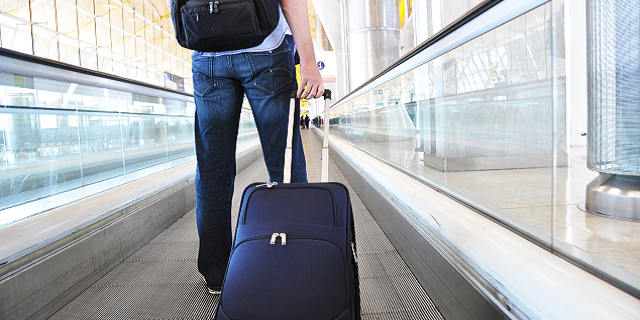For assistance call us on: 0131 447 2340 Email us
Here comes the sun

The fact is, however, that there is no such thing as a ‘healthy’ tan. Nor is there anything ‘good’ about it, no matter how you might think it improves your appearance. Tanning is actually a sign that the skin is suffering damage from harmful UV radiation thrown out by the sun, growing gradually darker as more of the pigment melanin is produced in an attempt to protect it from further UV exposure.
Put simply, pursuing a tan can seriously damage your skin resulting in painful sunburn, premature wrinkling and various types of skin cancer ranging from relatively harmless but unsightly carcinomas to a potentially fatal malignant melanoma.
Surprising as it may seem, skin cancer is now the most common form of cancer in the UK with at least 100,000 cases diagnosed each year of which around 2,500 will result in death – that’s 7 every day!
So who is most at risk and just what can you do to protect yourself and your family from the worst effects of the summer sun?
Could you be at risk?
It doesn’t matter whether you’re lying on a beach in Spain or soaking it up on a lounger in Saltcoats, everyone and anyone could be at risk of inflicting serious skin damage to themselves from too much exposure to the sun’s rays without taking the necessary protective measures.
Just as those with darker skin appear to be less at risk due to their natural pigmentation, people with particularly fair skin and those with a large number of freckles or moles are most likely to fall into the high risk category. It is also a statistical fact that incidences of skin cancer are most common amongst the 18-35 age group, although the jury is still out on exactly why this should be the case.
What about sunbeds? Recent research published by Cancer research UK shows that the average cancer risk from sunbed tanning is more than twice that of spending the same amount of time in the full glare of the Mediterranean midday sun, and that using sunbeds for the first time before the age of 35 increases the risk of developing a malignant melanoma by nearly 90 per cent. The Health and Safety Executive also advises that people with fair skin and/or moles should never use sunbeds.
What can you do to stay safe in the sun?
- As an effective first line of defence, you can protect your skin from the sun with simple summer clothing such as a T-shirt, a broad-brimmed hat to give shade to your face, neck and ears as well as sunglasses that have been specially designed to offer UV protection.
- Take shelter in a shady spot when the midday sun is at its fiercest between 11am and 3pm.
- Keep babies and young children out of direct sunlight at all times.
- Most important of all, choose the right protective level of sunscreen. Look out for sunscreens labelled with a Sun Protection Factor of at least SPF30. You should also look for sunscreens that display a four or five star UVA rating on the packaging.
- Make sure you apply a generous coating of of sunscreen to every part of your body from top to toe about 15-30 minutes before you go out in the sun to give it plenty of time to be absorbed into the skin. Keep applying top-up layers of sunscreen at regular intervals – say, every two hours – and always reapply if you’ve been for a swim and towelled yourself dry.
Stay alert, stay aware … and stay safe this summer!
Early detection of skin cancer could save your life. So it’s vitally important to check your skin regularly, preferably once a month. Get the help of a friend or family member to look at areas you can’t see such as your back, scalp, ears, the back of your legs and even the soles of your feet.
Look out for moles that are changing shape or areas of skin that appear to be scaly or crusty, scabs that might occasionally bleed but never seem to heal and any unusual lumps or patches of skin that are changing colour or becoming particularly itchy.
Organised by the British Association of Dermatologists, Sun Awareness Week launches on the 5th of May with the aim of raising public awareness about the danger of developing skin cancer as a result of over exposure to the summer sun.
The need for such an initiative is highlighted by a recent survey conducted by the British Skin Foundation which found that only a third of people surveyed checked their skin regularly for signs of skin cancer, 35% said that they wouldn’t have the faintest idea what to look for and only 25% said that they would get a mole checked by their GP straightaway at the first sign of any change.
Most skin cancers can be cured if detected and treated early. So if you are at all worried that you might be showing signs of possible skin cancer, you should make an immediate appointment with your doctor who, if they share your concerns, may then refer you to a specialist for expert diagnosis.
That’s where we come in. At The Edinburgh Clinic we offer skin cancer and mole screening services with a range of specialists, including Consultant Dermatologists who specialise in skin surgery and minor surgery.
To find out more, go to www.edinburghclinic.com
Further information:
-
http://www.bad.org.uk/for-the-public/skin-cancer
-
http://www.nhs.uk/Livewell/travelhealth/Pages/SunsafetyQA.aspx
-
http://www.britishskinfoundation.org.uk/SkinInformation/SkinCancer.aspx
-
http://www.ittakesseven.org.uk/skin-cancer-facts
-
http://www.independent.co.uk/life-style/health-and-families/health-news/is-skin-cancer-deadly-yes–but-four-in-ten-people-dont-think-so-9202240.html
-
http://www.cancerresearchuk.org/about-us/cancer-news/press-release/sunbed-skin-cancer-risk-double-that-of-mediterranean-midday-summer-sun
-
http://www.sunsmart.org.uk/UV-the-sun-and-skin-cancer/sunbeds/
You may also find these interesting
What’s included in a private health screening and MRI scan?
Preventing injuries to muscles, ligaments and joints when doing exercise
For outpatient appointments and enquiries call
For self-pay surgery
prices call
For outpatient appointments and enquiries call
'+appointments_phone+'
or
BOOK ONLINE
For self-pay surgery
prices call
For outpatient appointments and enquiries call
'+appointments_phone+'
or
BOOK ONLINE



